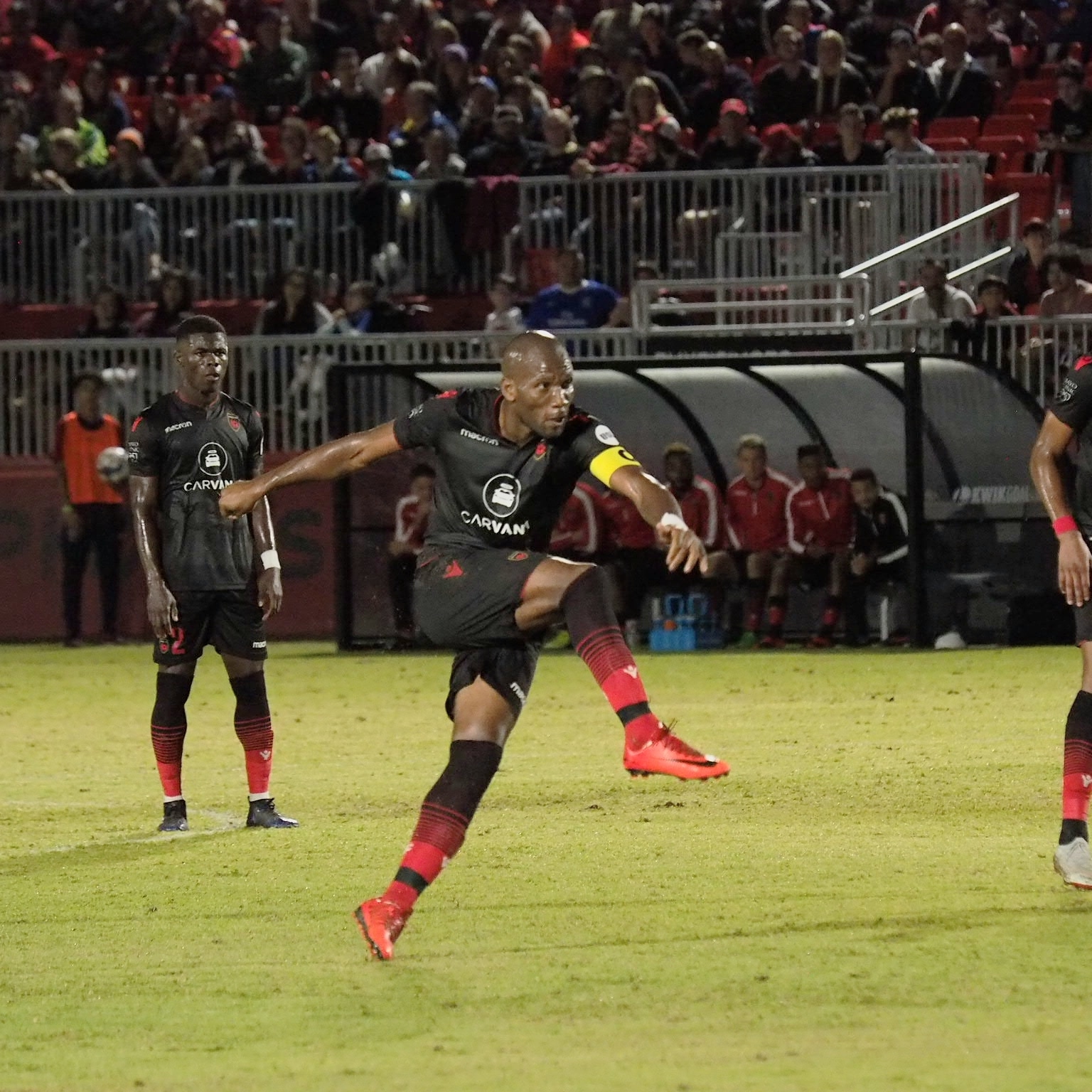
Welcome back to Rising Tactics Recap, a weekly column where I attempt to provide insight to Phoenix Rising fans by breaking down some strategic and tactical observations from Phoenix’s latest match.
Under Rick Schantz, Phoenix Rising have become a great team to put under the microscope and dig into nitty-gritty tactical details. Phoenix play an aggressive, attacking style based on pushing numbers forward into the attack and pressing high up the field.
It’s entertaining soccer and entertaining soccer makes for fun tactical talk. Though Saturday’s 2-1 win over El Paso Locomotive wasn’t particularly pretty, there are still plenty of tactical nuances to dive into from the game.
From kickoff, there was an apparent chess match between Phoenix’s press and El Paso’s buildup play. El Paso consistently tested Phoenix Rising’s pressing ability with their passing in deep areas. For the most part, Phoenix passed their pressing test with flying colors and made it difficult for their opponents to build up by closing down the ball quickly and cutting off passing angles into midfield.
In this clip, Phoenix Rising have El Paso’s midfield blocked off. Adam Jahn and Jon Bakero are hovering around the two opposing central midfielders, which eventually forces the goalkeeper to play a lofted ball forward that ends up out of bounds.
El Paso also challenged Phoenix’s defensive shape with a cleverly-designed 3-2-5 possession shape. Though he set up his team to defend in a 4-4-2, Locomotive manager Mark Lowry pushed his right back high up the field in possession to form a front five with the two outside midfielders and the two strikers. El Paso’s left back and two center backs formed a back three that sat behind two central midfielders at the base of the 3-2-5.
Here’s a look at the 3-2-5 in action (at 2x speed):
The width of El Paso’s front five allowed them to stretch Phoenix’s backline. It also forced at least one of Phoenix Rising’s wingers to track back and defend. In the above clip, Amadou Dia was pinned inside by one of the three central attackers, which forced Junior Flemmings to drop deep and close down the outside attacking player. Forcing Phoenix’s wingers to help defend is a great way for opposing teams to tire Flemmings and Asante out and keep them away from the attacking half.
As the first half continued, Phoenix scored their first goal (José Aguinaga’s first of the season), but El Paso tied the game up just a few minutes later. With the game level at 1-1, fouls began piling up and the referee lost control of the game. I heard more “boos” after Zac Lubin’s collision with an El Paso player in the 32nd minute than in any other moment in recent Phoenix Rising memory.
After a second yellow card to left-back James Kiffe, El Paso went down to 10 men right before half time. As strange as it sounds, Kiffle getting sent off actually made it more difficult for Phoenix Rising to re-take the lead.
“It’s harder when the other team has 10 because we have spare players that aren’t used to shape and system,” Schantz said after the game. “So when they’re in two lines of four, and the nine is playing like a six, we had five guys outside of that block.”
I ran that quote through the tactics jargon translator. Translated, Schantz’s comment reads something like this:
Trying to break down a 10 man defense is a totally different animal than breaking down a standard defensive block with 11 men. El Paso didn’t apply any pressure on our backline and defensive midfielder. Instead of having their forward pressure up the field, El Paso had that player clog up the midfield even more, which made it difficult for us to draw out or play through our opponents.
José Aguinaga echoed Schantz’s statement.
“Sometimes it’s funny because when the team has 10 players it’s harder than when they have 11 because they get in a low block and for us, it’s harder.”
From the start of the second half, it was very clear that El Paso was going to sit deep, give up possession, and try to attack in transition. I’ve written a few times this season about opposing teams defending in a 4-4-2 block, but in the second half against Phoenix, El Paso defended in a 5-4 block. They sat in two horizontal lines and dared Phoenix to break through them.
For a long stretch, it looked like things were going to go El Paso’s way. Phoenix struggled to play the ball into central areas and when they did, the central midfielders often couldn’t turn forward and create danger facing the opposing defense.
Bakero loses the ball on this play because he can’t receive the ball and turn in one motion:
However, Phoenix finally caught a break in the 71st minute. Jahn was fouled in the box and after a penalty kick from Solomon Asante later, Phoenix Rising was back in the lead. The sequence leading to the penalty wasn’t pretty, but it was emblematic of the second half.
It’s difficult to draw a general tactical conclusion from the second half of Saturday’s game, simply because El Paso were down to 10 men. It was an unusual circumstance that won’t regularly come into play for Phoenix throughout the rest of the year.
Still, breaking through a low block is something that Phoenix Rising will have to do many times during the rest of the season and having proof that they can break through a compact defense will be a helpful reminder in the long run.
The Final Third:
- AJ Cochran and Doueugui Mala, who started ahead of Joey Farrell, were both excellent on Saturday. Cochran had a nearly flawless defensive performance and Mala passed the ball with more precision than I’d ever seen from him before. At this point, it’s pretty much impossible to guess which of the three center backs (Farrell, Cochran, or Mala) will start on any given game day. “All of them keep clean sheets, all of them defend, and all of them want to win games in there, so I think they’re interchangeable,” Zac Lubin said. “They would start on any team in this league, so whatever works.”
- Kevon Lambert struggled at the 6 (the defensive midfielder position) against El Paso. His passing was questionable and his overall speed of play in possession looked slow. Lambert is a great option to play as a 6 in a more end-to-end game where Phoenix need his ability to cover ground and make tackles, but in a game where Phoenix have to carefully break down an opposing block, James Musa is the better option.
- Winning 13 games in a row is an incredible accomplishment. The wins in last few weeks haven’t been exceptionally pretty, but the fact that Phoenix Rising have still been able to claw their way to victory is worth applauding. I’ll close this week’s column with a quote from Rick Schantz: “They’re [the players] working very hard, they want to get better every week. I told them, just now, 13 wins in a row at any level in the world is unbelievable. Mentally it’s draining and emotionally, psychologically, these guys have handled it very well.”
Thanks for reading this week’s edition of Rising Tactics Recap! Check back next week for more insight and analysis.




